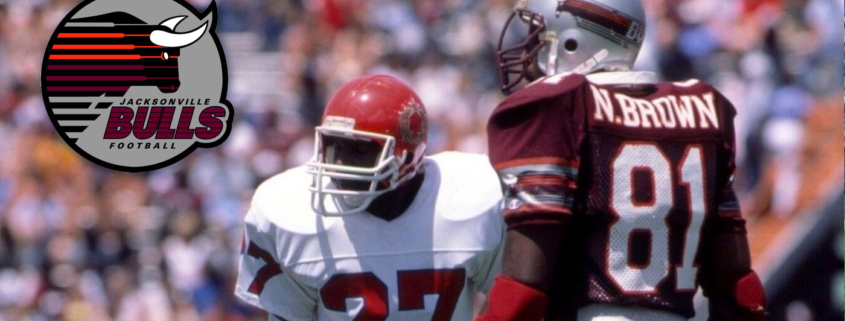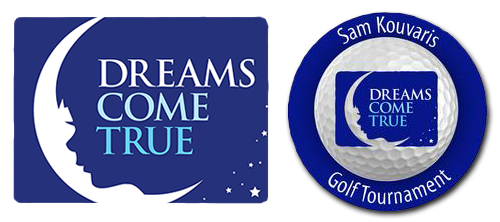USFL Was Real Football
This week marks the 34th anniversary of the United States Football League’s final game. The Baltimore (previously) Philadelphia Stars defeated the Oakland Invaders at Giants Stadium to win the USFL Championship behind MVP Kelvin Bryant and Head Coach Jim Mora.
The Jacksonville Bulls were part of the USFL in its final two years, 1984 and ’85 as real estate developer Fred Bullard brought the franchise to town. He gave it instant credibility, hiring NFL legend Larry Csonka as his General Manager and young offensive genius Lindy Infante as the Bulls’ Head Coach.
The city had gone through some flirtation with Bob Irsay and the Colts, John Mecom and the Saints and Bill Bidwell with the Cardinals. All three NFL owners used Jacksonville as leverage against their cities. Attendance at Bulls games was solid and it caught the NFL’s attention. Eventually then-Mayor Jake Godbold’s dream of an NFL team was realized eight years later in 1993.
The league’s ups and downs off the field are well documented, including their winning anti-trust lawsuit against the NFL that netted the league three dollars. In retrospect though, among the myriad of leagues that formed to challenge the NFL, the USFL was the most legitimate product on the field as a competitor. The recently defunct AAFL looked like a college all-star game. The XFL’s first iteration was amusing. The WFL of the ‘70’s was spotty. But the USFL was real, professional football.
“Absolutely, 100%,” Bulls receivers coach Buddy Geis said this week from his home in Jacksonville Beach. “Within ten years we’d have played the NFL for a championship.”
“Each team had a core of players who were good enough to play in the NFL,” explained Brian Franco, the Bulls kicker for both seasons. “Just look at the Heisman Trophy winners in the league.”
When the Bulls opened their second season, three Heisman’s lined up behind Brian Sipe in their backfield: Mike Rozier with one and Archie Griffin with two.
“It was real football,” Bulls quarterback Matt Robinson explained. Robinson had been in the NFL for seven years with the Jets, Broncos and Bills when the Bulls signed him for the ’84 season.
Geis was near the beginning of his coaching career when he put together a Jacksonville receiving corps that included Gary Clark, Perry Kemp and Aubrey Matthews.
“Look at the guys just on our roster,” he explained. “Just our receivers. Clark and Aubrey played eleven seasons in the NFL. Gary won two Super Bowls. And Perry Kemp had five years in the league.”
Much of the Bulls coaching staff, including Infante, went to work in the NFL. Lindy was the head coach in Green Bay and Indianapolis. And the talent extended off the field as well. Glenn Greenspan, Tiger Woods’ Director of Communications held the same job for the Bulls in ’84 and ’85.
“The league had talent, no question, real athletes” Greenspan says. “I think the talent in the league is underrated.”
Overall, nearly 800 players from the USFL, about half the league, played in the NFL. Four made it to the Pro Football Hall of Fame: Jim Kelly, Steve Young, Reggie White and Gary Zimmerman. Hall of Famers Bill Polian, George Allen, Sid Gillman and Marv Levy all worked in the USFL. Sean Landetta and Doug Flutie were the last two players from the USFL to retire in the mid 2000’s.
For the Bulls, quarterbacks Brian Sipe and Matt Robinson were among the players who had NFL experience before joining the USFL. Linebackers Andy Hendel and Vaughn Johnson went right to the NFL when the league folded. Defensive Tackle Keith Millard joined the Vikings right away and was twice an All-Pro and the NFL”s Defensive Player of the Year in 1989.
Geis went on to coach in Green Bay, Indianapolis and Dallas, as well as several college stops after his stint with the Bulls. He worked with Troy Aikman, Calvin Johnson and Sterling Sharpe and says the skill players in the USFL were nearly on par with those he later worked with in the NFL.
“We might have been Triple A at the time,” he explained. “But players like Jim Kelly, Bobby Hebert and even Steve Young were part of the league. We had smaller defensive lineman, but they could run. We would have had to develop more offensive linemen. But the skill players? They were ready.”
Geis’ assertion that the players he coached in the USFL were NFL caliber was put to the test when he brought Matthews and Kemp to Green Bay while coaching the Packers.
“Those guys were better than our 3rd and 4th round draft picks. They stuck and they played,” he explained.
There’s a perception that the league was something akin to the movie “The Replacements” operating outside the normal bounds of professional football. But players in the league said it was nothing like that.
“It’s not like we had kickers walking around the sidelines smoking cigarettes,” Franco mused. Franco joined the Bulls after a successful college career at Penn State and spent time in several NFL training camps after his USFL career. He kicked for Cleveland during the ’87 season.
“Everybody was fighting for a job,” he explained of the atmosphere in the USFL. “It was no different than going to an NFL camp. The way expectations were communicated, the way we practiced. There were only so many jobs and this was a chance to play.”
With 28 teams in the NFL in 1983, there were more good football players than there were roster spots in the league. That’s where the USFL was able to grab guys who could play.
“When you cut a guy at the end of training camp, it’s usually just because you’re not sure,” Geis said of the Bulls approach to acquiring talent. “Those last seven or eight guys you cut, they can play. We signed those guys and they had chip on their shoulder, wanting to prove they could play.”
“Things with the Bulls under Lindy ran just like they would in the NFL: Meetings, practice, all of it,” Robinson remembered. “In Portland they were a little bit looser. They’d been in three cities in three years (Boston and New Orleans before that). We practiced at a middle school. My helmet wouldn’t fit in my locker.”
But when it came to football, Robinson says the USFL brand was anything but substandard.
“The league was ahead of its time when it came to offense. Lindy had the receiver route tree and the quarterback passing options all laid out. Somebody was always open. It’s what everybody in the NFL uses now.”




